You can use something like the following. You would want to pre-calculate the hist objects to get the correct ylim values, then use axis and mtext or title to properly label your graph.
set.seed(1234)
x <- rnorm(100, 0, 1)
plot.new()
plot.window(ylim = c(-40, 40), xlim = range(x))
p <- list(axes = FALSE, xlab = "", ylab = "", main = "")
par(new = TRUE)
do.call(hist, c(list(x = x, ylim = c(-40, 40)), p))
par(new = TRUE)
do.call(hist, c(list(x = x, ylim = c(40, -40)), p))
axis(side = 2,
at = pretty(par()$usr[3:4]),
labels = abs(pretty(par()$usr[3:4])))
axis(side = 1)

EDIT
## Create some fake data
set.seed(1234)
d <- rnorm(250, 0, 1)
e <- rnorm(250, 1, 1)
f <- rlnorm(100, 0, .2)
g <- rlnorm(100, 1, .2)
## Function for plotting
multhist <- function(..., bin.width, col, dir, xlab = NULL, ylab = NULL,
main = NULL) {
vals <- list(...)
vrng <- range(vals)
brks <- seq(vrng[1] - abs(vrng[1]*0.1),
vrng[2] + abs(vrng[2]*0.1),
by = bin.width)
yrng <- max(sapply(lapply(vals, hist, breaks = brks), "[[", "counts"))
yrng <- 1.2*c(-1*yrng, yrng)
plot.new()
plot.window(ylim = yrng, xlim = vrng)
addhist <- function(x, col, dir) {
par(new = TRUE)
hist(x = x, ylim = dir*yrng, col = col, xlab = "", ylab = "",
main = "", axes = FALSE, breaks = brks)
}
mapply(addhist, x = vals, col = col, dir = dir)
py <- pretty(yrng)
py <- py[py >= yrng[1] & py <= yrng[2]]
axis(side = 2, at = py, labels = abs(py))
axis(side = 1)
title(main = main, xlab = xlab, ylab = ylab)
}
You can give the function numeric vectors, as well as vectors for the corresponding colors and directions (1 or -1). I did not do the formal checking on the lengths of vals, col, and dir, but it is pretty straight forward.
## Use the function
multhist(d, e, f, g, bin.width = 0.5,
col = c("white", "white", "lightgreen", "darkgreen"),
dir = c(1, -1, 1, -1), xlab = "xlabel", ylab = "ylabel",
main = "title")




